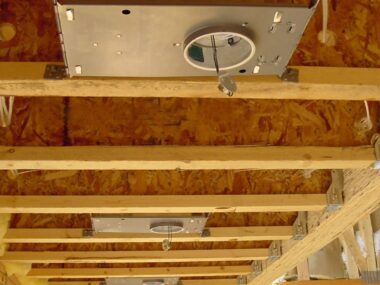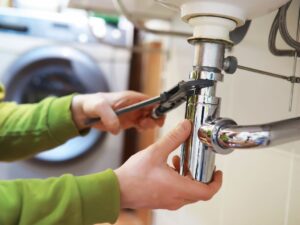Every household relies on kitchen appliances to keep daily life running smoothly. From cooking family meals to cleaning up afterwards, these machines take on essential tasks that save both time and effort. Yet, problems often seem to arise when you least expect them. The oven may stop heating just before a dinner party, or the dishwasher may stall in the middle of a busy week. These interruptions can be stressful, but with the right knowledge and a few proactive steps, it is possible to handle breakdowns quickly and prevent them from happening again.
Common Reasons Kitchen Appliances Fail During Critical Moments
Kitchen appliances tend to fail when demand on them is at its highest. Holidays, weekends, or periods of heavy use often expose weaknesses in components that were already worn. High temperatures in summer can also put extra pressure on cooling systems and motors.
Power surges or sudden voltage changes are another leading cause of appliance failure, especially in models that rely on sensitive electronic parts. Even routine use can contribute to problems when maintenance is neglected. Dust build-up in coils, mineral deposits in heating elements, or lint trapped in vents gradually reduce efficiency until performance drops completely.
Wear and tear accumulates over time and is most noticeable during peak use. Seals begin to leak, belts loosen, and gaskets lose flexibility. Staying proactive with maintenance reduces these risks and helps extend the life of appliances. For sourcing quality replacement parts when issues do arise, trusted suppliers such as McCombs Supply provide homeowners with reliable options that make repairs faster and less frustrating.
Quick Troubleshooting Steps for Sudden Appliance Breakdowns
When an appliance stops working, safety is always the first priority. Before attempting to diagnose the problem, unplug the appliance or switch off the circuit breaker. For gas-powered equipment, avoid any do-it-yourself repair attempts unless you have proven expertise, as incorrect handling could create serious risks.
Begin troubleshooting with simple checks. Ensure the appliance is plugged in correctly and that the outlet is functioning. Testing the socket with another device is a quick way to confirm. Check the circuit breaker panel as well, since running several high-power appliances at once may cause a trip.
Some modern appliances allow you to reset their systems by disconnecting power briefly. A short pause before reconnecting can clear temporary faults in the control board. Others feature a reset button located on the control panel, so consulting the manual is worthwhile.
Mechanical blockages are another frequent culprit. Dishwashers and washing machines often stop mid-cycle when filters or pumps become obstructed. Refrigerators may lose cooling efficiency if vents are blocked by stored food. Identifying and clearing these small issues can bring an appliance back into use quickly.
Essential Tools for Emergency Appliance Repairs
Having a few basic tools on hand can make the difference between resolving a small problem immediately and waiting days for professional help. A simple repair kit should include screwdrivers, pliers, wrenches, and a flashlight. These items allow you to remove panels and inspect internal parts without difficulty.
A multimeter is another useful tool, helping you determine whether electrical components are functioning correctly. By checking voltage, resistance, and continuity, you can often rule out or identify faulty elements before calling a technician.
Cleaning supplies also play an important role in emergency maintenance. Appliance-safe cleaners, vinegar solutions, and brushes for tight spaces can all restore function by removing blockages or scale. When replacement parts are needed, ordering them by the exact model and part number ensures a proper fit and saves time during repairs.
When to Repair vs. Replace Your Kitchen Appliances
The decision to repair or replace an appliance often depends on age and cost. Appliances nearing the end of their typical lifespan may not be worth the investment of repeated repairs. If the price of fixing an item is more than half the cost of buying new, replacement is usually the smarter option.
Another factor is part availability. Manufacturers typically supply parts for several years after a model is discontinued, but once those parts become rare, repairs may be more expensive or impractical. Energy efficiency is also a consideration. Replacing an old refrigerator, for example, could result in lower energy bills over time. Balancing these points ensures that you make an informed decision that saves money in the long term.
Preventing Future Kitchen Appliance Emergencies
Preventive care is one of the simplest ways to avoid unexpected failures. Cleaning filters, inspecting seals, and wiping vents regularly helps reduce strain on motors and prevents airflow restrictions. These tasks take only a few minutes but significantly extend the lifespan of appliances.
Creating a seasonal checklist is an effective way to stay on top of routine tasks. Vacuuming refrigerator coils, flushing dishwasher filters, and inspecting washing machine hoses all contribute to smoother operation. Addressing small issues early stops them from escalating into expensive breakdowns.
Regular maintenance not only saves money but also ensures that your appliances perform consistently when you need them most. A little extra care today leads to greater reliability tomorrow.
Early Warning Signs and Response
Appliances usually give signs before failing completely. Strange noises, longer running cycles, fluctuating temperatures, or leaks often signal problems developing inside the system. Taking action at the first sign of trouble can prevent more serious damage.
Simple steps like tightening loose screws, clearing minor blockages, or replacing worn seals can be carried out at home. Having a supplier contact on hand makes it easy to order parts promptly, so small issues are resolved without delay.
Keeping appliance manuals and model information in an accessible place also helps. With the correct details ready, troubleshooting and part ordering becomes much more efficient.
Protecting Appliances from Electrical Surges
Electrical surges can severely damage sensitive components. Surge protectors installed at outlets provide an affordable safeguard for individual appliances, while whole-house surge protection offers more comprehensive coverage. This protection reduces the risk of circuit board failure caused by power fluctuations or storms.
Adding this simple measure to your home setup is a cost-effective way to protect your investment in appliances and avoid untimely breakdowns.
Keep Your Kitchen Running Smoothly
Unexpected appliance failures may be frustrating, but with preparation and knowledge they can be handled effectively. Understanding common causes of breakdowns, knowing how to troubleshoot quickly, and keeping essential tools on hand makes the process far less stressful. Preventive maintenance and surge protection add further peace of mind, ensuring your appliances are ready for daily demands.
Your kitchen is central to daily life, and keeping it running smoothly is essential. By combining proactive maintenance with smart troubleshooting, you reduce the likelihood of disruptive failures. When replacement parts are needed, choosing a trusted supplier ensures you receive the right components for the job. Take the time now to protect your appliances, and enjoy the confidence of knowing your home is prepared for any challenge.











